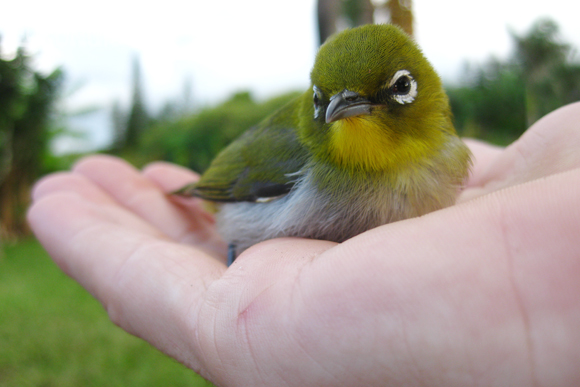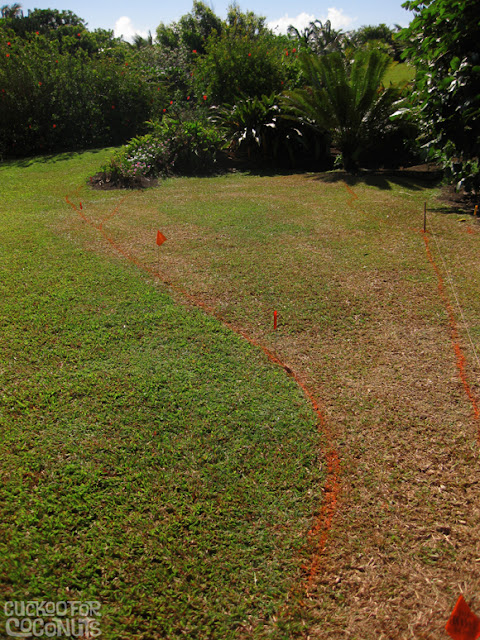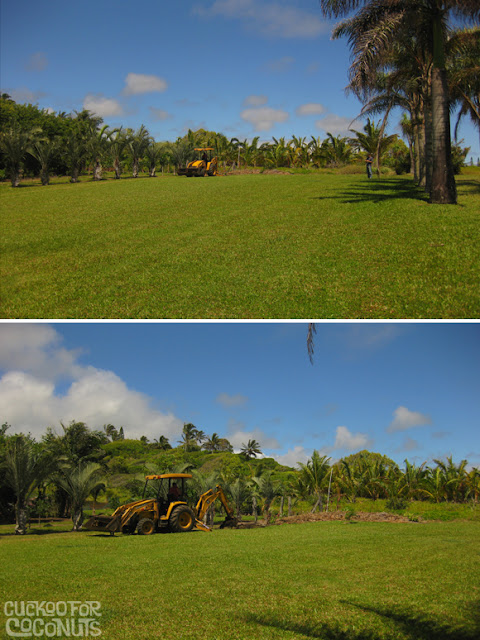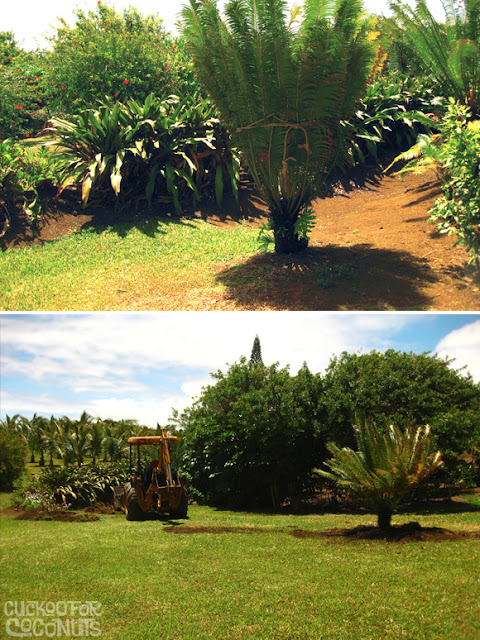We continue this post with more on the hedge planting and the prep of the new garden shed we have started building in the old nursery area.
Soon after we moved in back in March 2007, we began planting seeds and starts in a small nursery area out near the garden. We were not sure what would become of these plantings at the time, but it was fun to watch them grow. All of what was planted in this area has been relocated to new areas all around the yard creating either privacy, windbreaks or landscaping around the water tanks. The
areca palms make somewhat of a mess as well because they constantly drop their fronds. I can go and clean up 30-40 fronds one day only to have to do it all again a few days later. BUT, that only takes 10 minutes and we don't have to break out the hedge trimmers like we would on the hibiscus. Just trimming those, picking up the cutting then hauling to the mulch pile is an all day affair.
It's understandable as to why people like wide open spaces with not much planting because the more you plant the more you have to maintain. We are learning to plant things that require little to no maintenance. Certain hibiscus are way too time consuming and need to be cut back every few months or they get
leggy... meaning the bottom part is not covered in growth which is mainly caused from a lack of light due to the tops being to dense. Red ginger is a bit of a pain as well because it spreads so quickly. We love the red ginger, but tend to plant that in out of the way areas.
 |
Me planting the areca palm seedlings and some ti in the nursery April 2007. This is now the site of the new shed.
|
 |
February 2008. The areca palms that were planted in April 2007. Not too much growth.
|
 |
The areca one year later in February 2009. They shot up from about 8" to almost 3 feet.
|
 |
And in June 2010. From 3 feet to about 8 feet in a year. We really wanted to move these last summer, but the office construction put the yard maintenance on hold.
|
 |
Another view June 2010. There were about 100 palms packed in this tiny area.
|
 |
Here you can see the clumping action of the areca palms and how they send off a new trunk at the base. Notice the intricate root system which made these oh so difficult to remove..
Many roots were broken during the dig, but the great thing about palms is that they are always making new roots as older roots wither away.
|
 |
| One of the 15 foot sections that had not been planted along the north hedge. First we have to dig up all the grass, turn the dirt and transplant the palms. |
 |
One section down. We also add a row of ti in the back. The stalks of ti will make a sort of fence that will hold the fronds and cuttings from blowing over into the neighboring yard. Most of the dead fronds were trimmed off before planting then I trimmed more off leaving only 2 per plant plus the new center shoot so that they do not have to pull so much water up through shocked roots. You can see a better example of that in the next image.
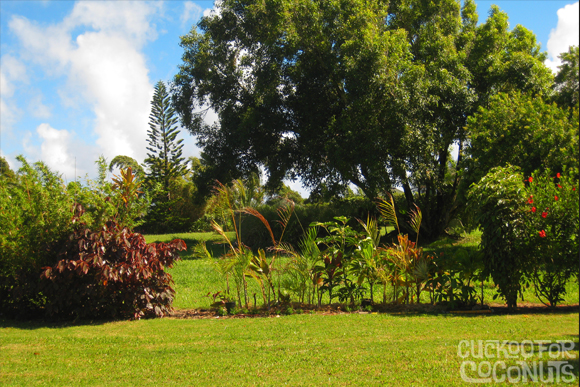 |
The 2nd 15 foot opening we just filled in with an assortment of areca, ti, rainbow dracaena and asparagus fern. We left a 3 foot opening next to that red bush so that we can access the back side and keep it maintained. We also left a 3-4 foot buffer from the property line on the backside.
|
 |
Once mature, the hedge will start to look something like these. The top image is our front hedge and is about 12 feet tall. The bottom image is in our gulch and this clump is over 30 feet tall and is also the parent plant to all of our seedlings. |
Next up: The south hedge and berm. |


